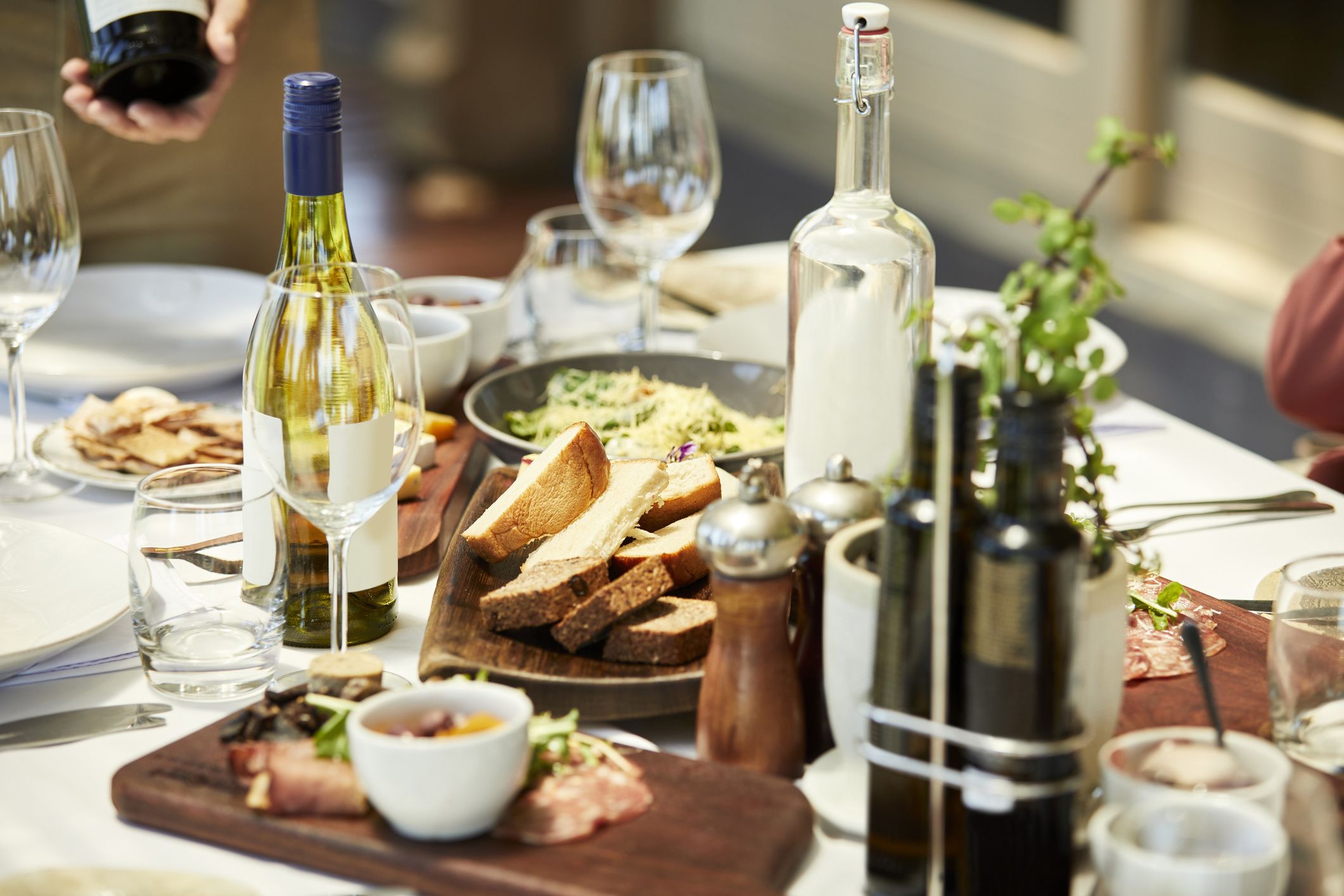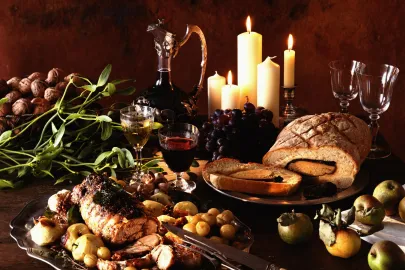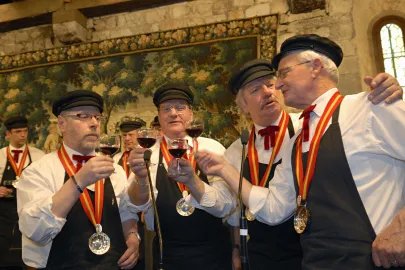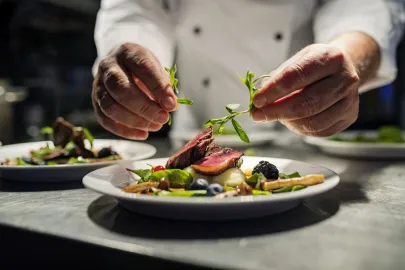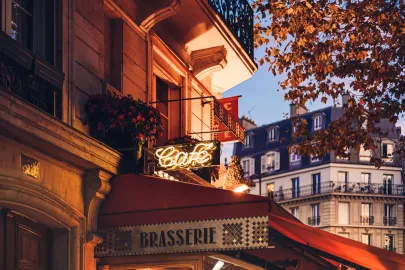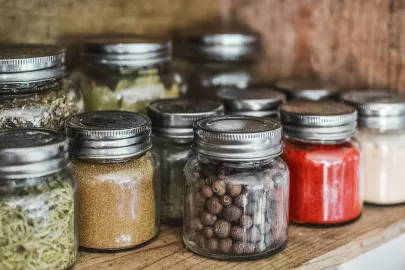Discover how France perfected the art of dining, from medieval banquets to modern Michelin-starred tables. Explore the history of arts de la table — the rituals, design, and gastronomy that make French dining a UNESCO-protected culinary treasure.
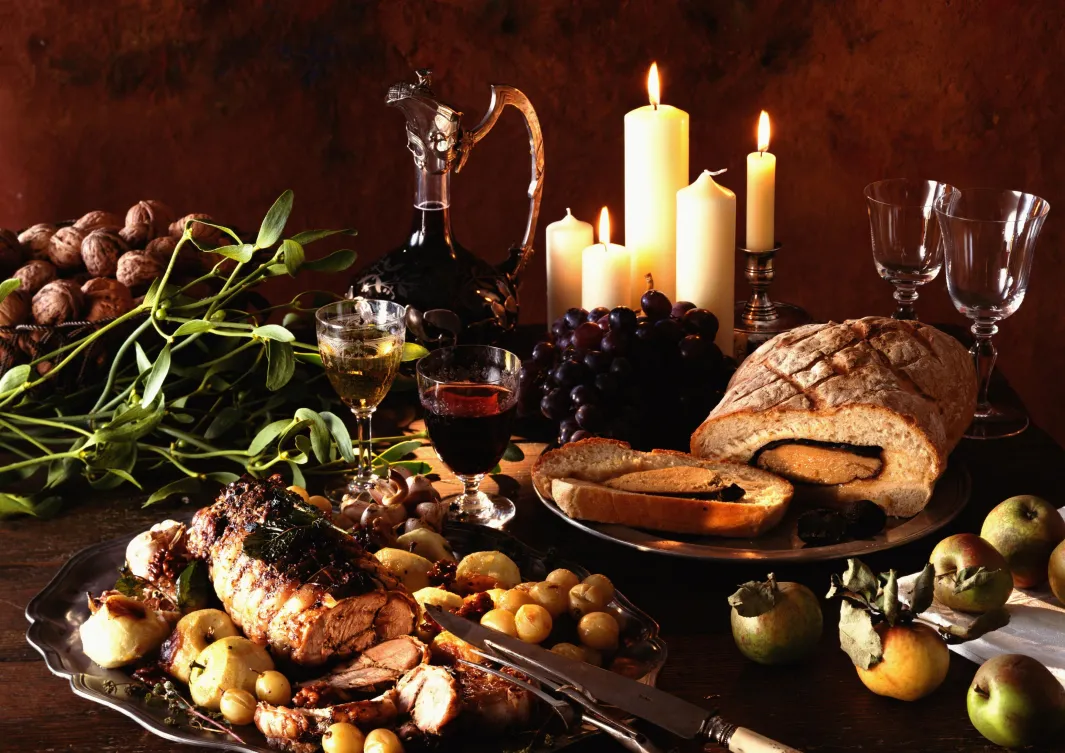
It would be an understatement to say the French take table culture seriously. In 2010, UNESCO even listed the French gastronomic meal and its rituals as an Intangible Cultural Heritage! So how did it come about? Over the centuries, the French royal court has played a central role in turning dining into an art form. Let’s look back together at some of the most important steps, from medieval banquets to the dazzling dinners of Versailles.
Arts de la Table 101
First things first, what are we talking about? Arts de la table refers to the decorum, design, and rituals surrounding dining in France. What springs to mind first is a feast for the eyes — the finest porcelain, crystal glassware, heavy silverware, chandeliers, embroidered French linens and freshly cut flowers. Because in France, a meal is never just a meal — it is a cultural act.
From Eating With Your Hands to The Renaissance of Elegance
In the Middle Ages, royal banquets were lavish. As public displays of wealth, the dishes served were abundant, featuring whole roasted animals, heavily spiced sauces, and exotic imported goods like cinnamon or saffron. “Plentiful meant powerful” was the rule. Entertainment was key, with the usual presence of jesters and the like. But there were no forks yet; guests ate with their fingers or daggers, using slices of bread as plates. Linens were luxurious, but manners remained rudimentary.
We had to wait until the Renaissance and King François I to see refinement, influenced by Italian court culture. When he came to power in 1515, his taste for refinement resulted in the French Renaissance. Starting with the noble class of the society, forks and chairs slowly became a staple at the table, replacing hands and benches. Glasses were often shared amongst guests at the time. The Service à la française format also began to take form: dishes were served all at once in symmetrical arrangements, allowing diners to admire their food and help themselves.
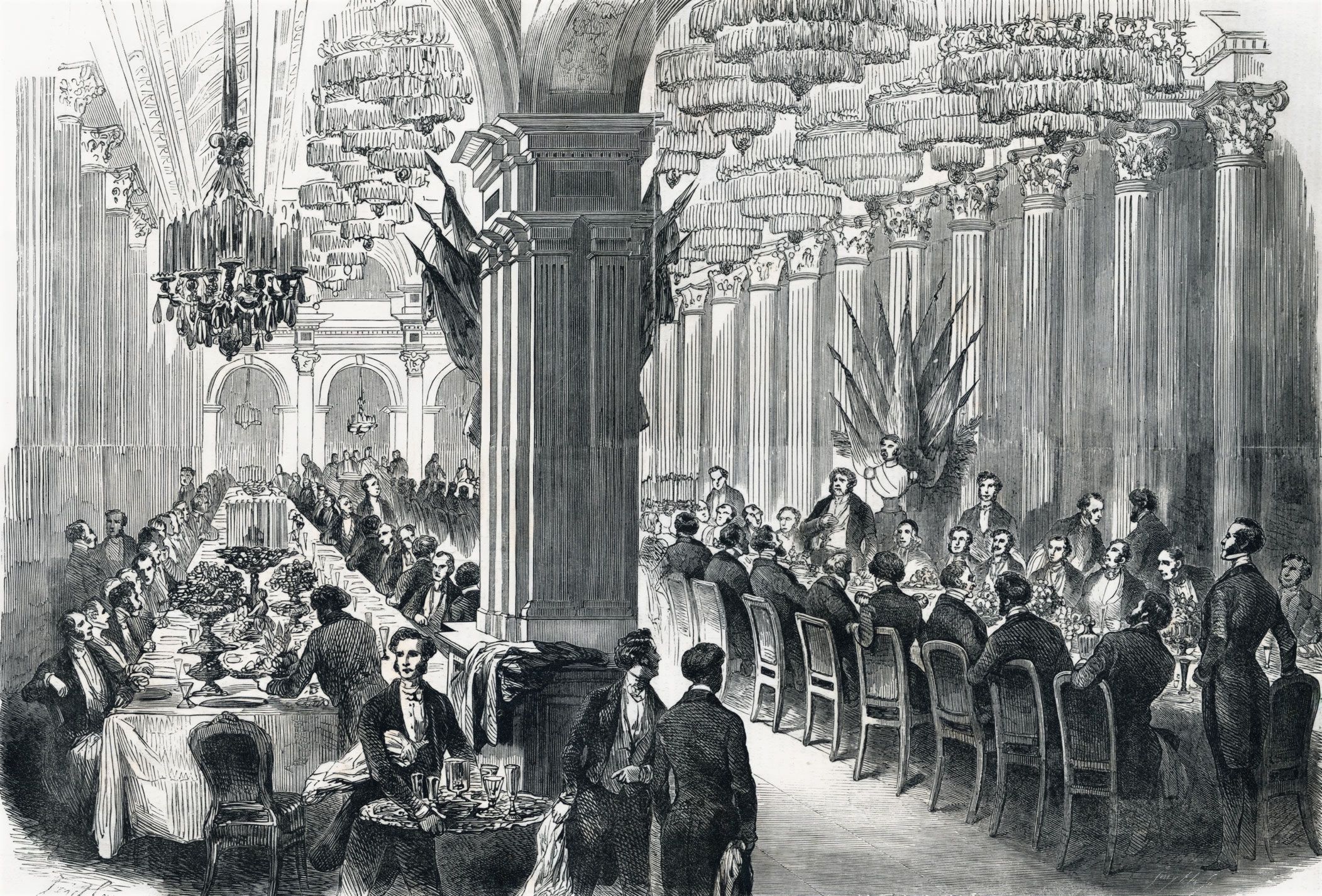
© Rocking Stock
Versailles and the Codification of Table Rituals
No monarch transformed l’art de la table more than Louis XIV, the Sun King. At Versailles, he turned dining into a formal ritual. The King’s daily meals, especially the Grand Couvert, were public spectacles. Nobles watched him eat, as a demonstration of his divine power.
Tableware was no longer simply functional — it became an expression of prestige. French crystal and porcelain also began to flourish. The royal court supported the creation of the Sèvres Porcelain Manufactory, which soon became the epitome of royal tableware.
The Art of Conversation
In the 18th century, under the reigns of Kings Louis XV and Louis XVI, French dining became more intimate and intellectually driven. Court meals were no longer only about spectacle; they became a stage for elegance and wit, favouring conversation.
Queen Marie-Antoinette — forever associated with macarons thanks to Sofia Coppola’s eponymous movie — set the tone for a lighter, artful style at the table, with delicate porcelain, floral centrepieces, and daintier menus. Sugar sculptures, scented napkins, and themed table settings reflected the Enlightenment’s fascination with nature, exoticism, and philosophy.
The French Revolution (1789) brought an end to royal excess. Versailles was emptied, and aristocratic kitchens were abandoned — but the art de la table survived. Displaced chefs opened restaurants in Paris, introducing refined dining to the public. Modern “Service à la russe” also slowly replaced its French counterpart, allowing guests to be served individually and favouring warm dishes. Serveware began to appear more regularly — contemporary Christofle silverware is a living testimony to that fine silversmith craftsmanship.
During the 19th century, the rise of the Bourgeoisie brought the arts de la table into the homes of the upper middle class. Manuals on etiquette and table setting proliferated. Silver cutlery, crystal glassware, and coordinated porcelain sets became emblems of social status.
Napoleon and later the Bourbon Restoration revived certain court traditions. New services were commissioned, and crystal houses like Baccarat or Saint-Louis emerged as symbols of modern luxury. King Charles X is said to have imposed individual glasses under his reign to avoid waiters eavesdropping.
Today: A Living Tradition
Though France is now a republic, the art de la table remains a cornerstone of French identity. In 2010, UNESCO added the “gastronomic meal of the French” to its list of Intangible Cultural Heritage, recognising not only the food but also the rituals, the table setting, and the role of conviviality in French life.
At contemporary tables, you’ll still find the legacy of the French court, through an unspoken choreography that guides each meal — more tips on this here. Many of today’s French Classics have roots in this heritage: think of the refined cuisine bourgeoise of the 19th century, with dishes like beef bourguignon and coq au vin, or festive recipes for Special Occasions such as oysters at Christmas or a roast lamb at Easter. Also, no French meal feels complete without the ritual of dessert: whether a seasonal classic like tarte Tatin or a creamy Paris-Brest, ending on something sweet remains central. Explore more in our French Desserts section or dive deeper with pastry secrets from our Experts. Last but not least, the spirit of French dining also lives on drinks wise – you can trust our Experts!. Champagne is still an international symbol of celebration, but the king of bubbles also makes an amazing dinner companion when rightly paired.
Following modern sensibilities, seasonal produce, local craftsmanship, and attention to detail is equally important today. Whether it’s a garden lunch or a candlelit dinner, the goal remains the same: to elevate the everyday and share joy around the table.

